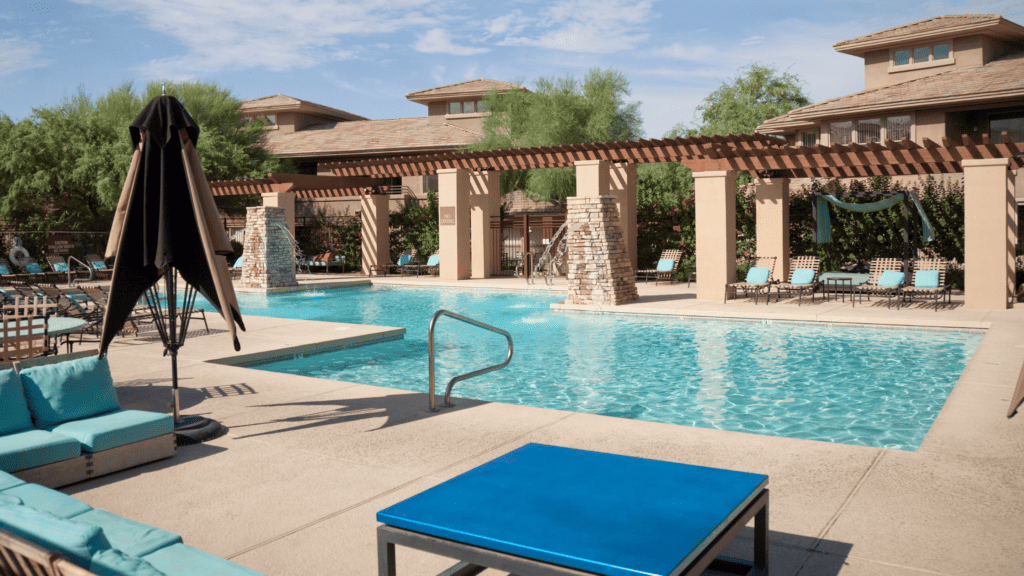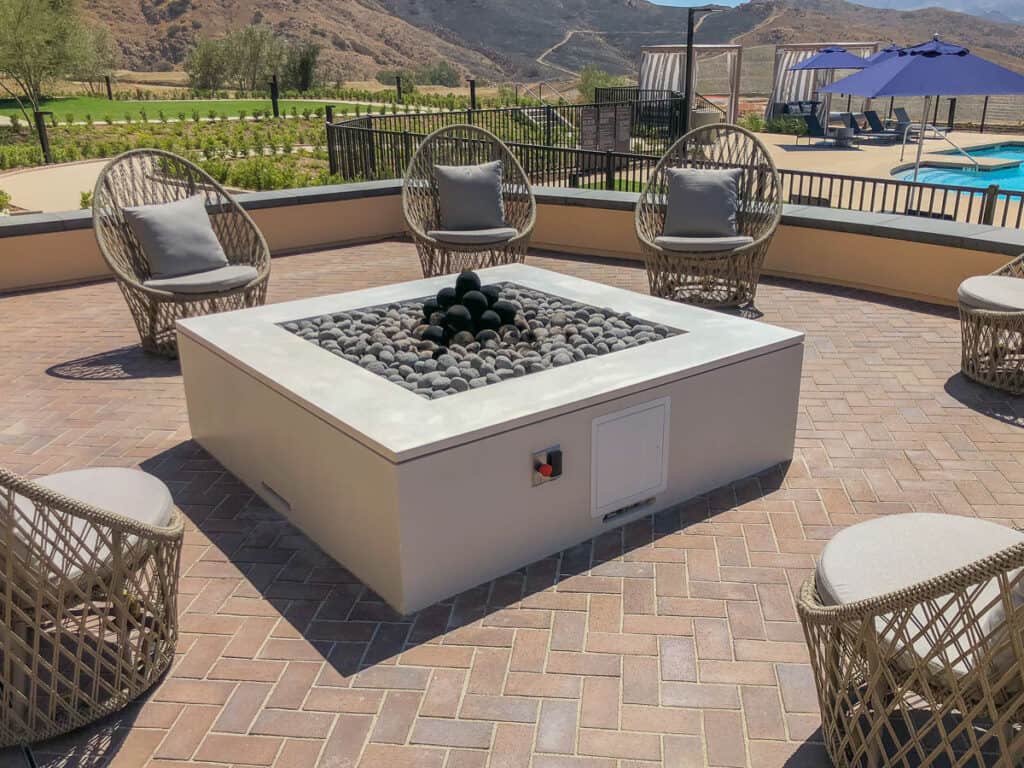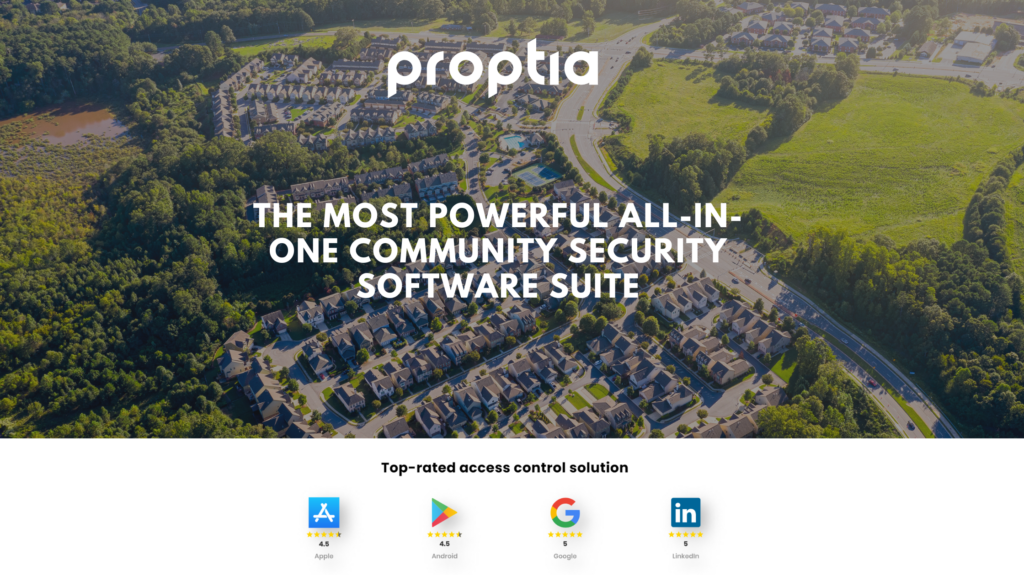Starting in early 2021, rent prices across the U.S. significantly increased, reaching all-time highs that make it more difficult for families and young adults to find a suitable living space.
Property managers and building owners that have invested in developing and maintaining amenity-rich multi-family complexes, condos, and apartment buildings now face the challenge of creating a fair and flexible amenity fee structure that balances affordability for residents while generating sufficient revenue to cover costs.
A fair and flexible amenity fee structure ensures that residents feel they receive value for their money while fostering a sense of community in the building. Such a fee system can help attract and retain residents, as well as contribute to the overall satisfaction and well-being of those living in the complex.
In this article, we will explore some standard amenities, discuss how to apply different fee structures, and provide guidance on calculating a fair system for your residents.
By implementing a well-thought-out amenity fee structure, you can create a harmonious living environment that benefits residents and management.
Examples of common amenities

Amenities play a significant role in attracting potential residents and enhancing their living experience, but they aren’t free to install or maintain. Here are some common examples that may require an amenity fee:
- Fitness centers: Well-equipped gyms are highly sought-after amenities for residents who value health and wellness.
- Swimming pools: Pool areas provide a recreational space for residents to unwind, exercise, or socialize. Some complexes may offer indoor and outdoor facilities, usually requiring a pool access control system to limit risk.
- Clubhouses and community spaces: Versatile areas designed for residents to gather, host events, or participate in various activities. These spaces may include lounges, fire pits, game rooms, kitchens, and meeting rooms.
- Parking facilities: Complexes may provide on-site parking garages, covered parking, or designated parking spaces to accommodate residents’ needs.
- On-site laundry: Laundry facilities are essential for residents, especially in apartments without in-unit washers and dryers.
- Security features: Safety is a top priority for residents, and providing security features such as controlled access to buildings, visitor management, and on-site security personnel can make them feel more secure in their living environment.

These common amenities enhance the living experience for residents and contribute to the property’s overall value. Offering a well-rounded package of amenities can help property managers and building owners attract and retain tenants and maintain a competitive edge in the market.

Different amenity fee structures
When charging residents for the use of amenities, finding a structure that balances affordability and revenue generation is essential. Here are several different amenity fee structures:
Flat fee for all amenities
A flat fee structure charges a single, fixed amount that covers access to all available amenities. This approach simplifies billing and ensures equal access to amenities for all residents. However, it may not be the best option for those who only use a limited number of amenities.
Tiered fee structure based on usage
In a tiered amenity fee structure, residents pay varying levels according to their usage. This approach can cater to different preferences and budgets, as residents only pay for the amenities they use the most.
A la carte pricing for individual amenities
A la carte pricing allows residents to pick and choose the amenities they wish to use and pay for them individually. This approach provides flexibility and customization but may result in more complex billing and administration.
Bundled packages for groups of amenities
Bundled packages offer several amenities at a discounted rate compared to a la carte pricing. For instance, RFID vehicle access, reserved parking, and entrance monitoring could be packaged together for a flat security fee.
Hybrid pricing
A hybrid approach combines elements of flat fees and a la carte pricing. Residents pay a flat fee for basic amenities, while additional charges apply for specific, premium amenities.
Inclusion of specific amenities in rent
Sometimes, essential amenities are included in the rental price. This feature can be attractive for potential residents looking for simplified billing and no unexpected charges.
Charging for a Credential to Access the Amenities
Many communities have strict regulations in place to control access to their amenities, including pools, fitness facilities, tennis and pickleball courts. Some even extend this control to include BBQ pits, saunas, and firepits. In these cases, residents are required to use a smartphone credential or fob to activate the amenity. The purpose of such access control measures is to monitor and restrict entry to unauthorized individuals. By implementing a cloud-based access control system, property managers have the ability to create access levels that correspond to the designated usage schedules of each amenity.
For example, residents with an access level for the pool can use their credentials only between 6 am and 11 pm when the pool is open. Another advantage of this system is that it allows management to quickly deactivate credentials if residents fail to pay their dues or misuse the amenities. In the past, communities relied on physical fobs for access, but due to issues such as lending, loss, and cloning, many management teams are now leaning towards smartphone mobile credentials. These credentials, which are issued to a resident’s smartphone via Bluetooth, cannot be shared, reissued, or replicated. Furthermore, residents are less likely to lend their iPhone to someone for the purpose of accessing the community pool compared to a simple plastic fob.

How to calculate a fair amenity fee system
A fair amenity fee system considers various factors, including the cost of maintaining amenities, the value residents place on them, and market rates.
Here is a step-by-step guide on calculating a fair amenity fee system for your residents:
- Assess installation and maintenance costs: Calculate the total costs associated with each amenity, including maintenance, staffing, utilities, and additional expenses. This will help you understand the basic costs that need to be recovered through the fee structure.
- Determine the resident value of each amenity: Conduct surveys or gather feedback from residents to understand which amenities are most popular, valuable, or frequently used. This information will help you prioritize amenities and allocate fees accordingly.
- Consider the demographic of your residents: Families may prioritize outdoor spaces and playgrounds, while young professionals may prefer fitness centers and social areas. Tailor your fee structure to cater to the preferences of your residents.
- Evaluate the market rate: Research the fees charged by nearby properties for similar amenities. This will help ensure your prices are competitive and aligned with market expectations.
- Balance affordability and revenue: While you have to cover the associated amenity costs, it’s crucial to balance generating revenue and ensuring affordability for residents. Excessive fees may discourage potential tenants or lead to dissatisfaction.
- Ensure transparency: Clearly communicate the fees associated with each amenity and any additional charges or discounts that may apply. Transparency helps build trust with residents and prevents any misunderstandings or disputes.
- Regularly review and adjust: Periodically evaluate the fee structure, considering factors such as inflation, changes in maintenance costs, and feedback from residents. This will help you maintain a fair and up-to-date amenity fee system.
By following these steps and considering the unique needs of your property and its residents, you can create a fair and flexible amenity fee system that benefits both the property management and the residents living in the complex.
Implementing a fair and flexible amenity fee structure
Here’s how to implement a reasonable and flexible amenity fee structure, along with examples for each step:
Communicate clearly
Ensure that all residents are aware of the amenity fees and associated policies. Provide clear, written documentation outlining the fees and any rules governing the use of amenities.
Example
Distribute a welcome packet to new residents that includes a breakdown of the amenity fees, an explanation of the fee structure, and guidelines for using each.
Offer multiple payment options
Make it convenient for residents to pay amenity fees by offering a variety of payment methods.
Example
Allow residents to pay fees online, in person, via mobile apps, or by setting up automatic payments from their bank accounts.
Monitor usage and feedback
Regularly assess the usage of amenities and gather feedback from residents to identify areas for improvement or adjustments to the fee structure.
Example
Conduct annual surveys asking residents about their satisfaction with amenities, usage patterns, and suggestions for changes to the fee structure or amenity offerings.
Promote equitable access for all residents
Ensure that all residents have equal opportunities to use and enjoy the amenities, even if they are on a lower-tier fee structure or have opted for a la carte pricing.
Example
Implement a reservation system for popular amenities like community spaces, allowing residents to book time slots in advance, ensuring everyone can use the facility.
Consider offering discounts or incentives for long-term residents
Reward loyal residents with discounts on amenity fees or provide incentives for referring new tenants.
Example
Offer a 10% discount on amenity fees for residents who have lived in the complex for over two years, or provide a one-time $50 credit toward amenity fees for residents referring a new tenant who signs a lease.
Do gated communities have amenity fees?
Gated communities, residential neighborhoods with controlled access and security measures, often provide a range of amenities for their residents. These may include:
- Parks
- Clubhouses
- Swimming pools
- Sports facilities
Like multi-family complexes, condos, and apartment buildings, gated communities may also charge amenity fees to cover the costs of maintaining and providing these perks.
However, the fee structure usually differs from apartment complexes or condominiums. Gated communities typically have a homeowners association (HOA) that manages the community’s common areas and amenities.
Residents are usually required to pay monthly or annual HOA fees, which can include the costs of maintaining and providing amenities.
Conclusion
Creating a fair and flexible amenity fee structure is critical for maintaining a peaceful, desirable living environment – even as competition for tenants increases.
By considering the various fee structures available, understanding the needs and preferences of residents, and regularly reviewing and adjusting fees, property managers and building owners can strike an affordable balance while still making money.
Don’t forget the importance of access control and security for your amenities and residents. If you’re a property manager looking to enhance your property’s access control and security measures, get in touch with Proptia today.
Our team of experts is here to help you find the perfect solution for your property’s needs. Contact us to learn more about our access control solutions and how they can benefit your residents and your property management operations.
Schedule a Demo!
GET IN TOUCH

Author: Nick Saraev
Nick is a tech-savvy freelancer with a passion for coding and a knack for writing. As a programmer by trade, he knows the ins and outs of the digital world, with a particular interest in PropTech and Security Tech. When he’s not tinkering with the latest software, you can catch him scaling mountains or unleashing his creative side on a canvas. .

